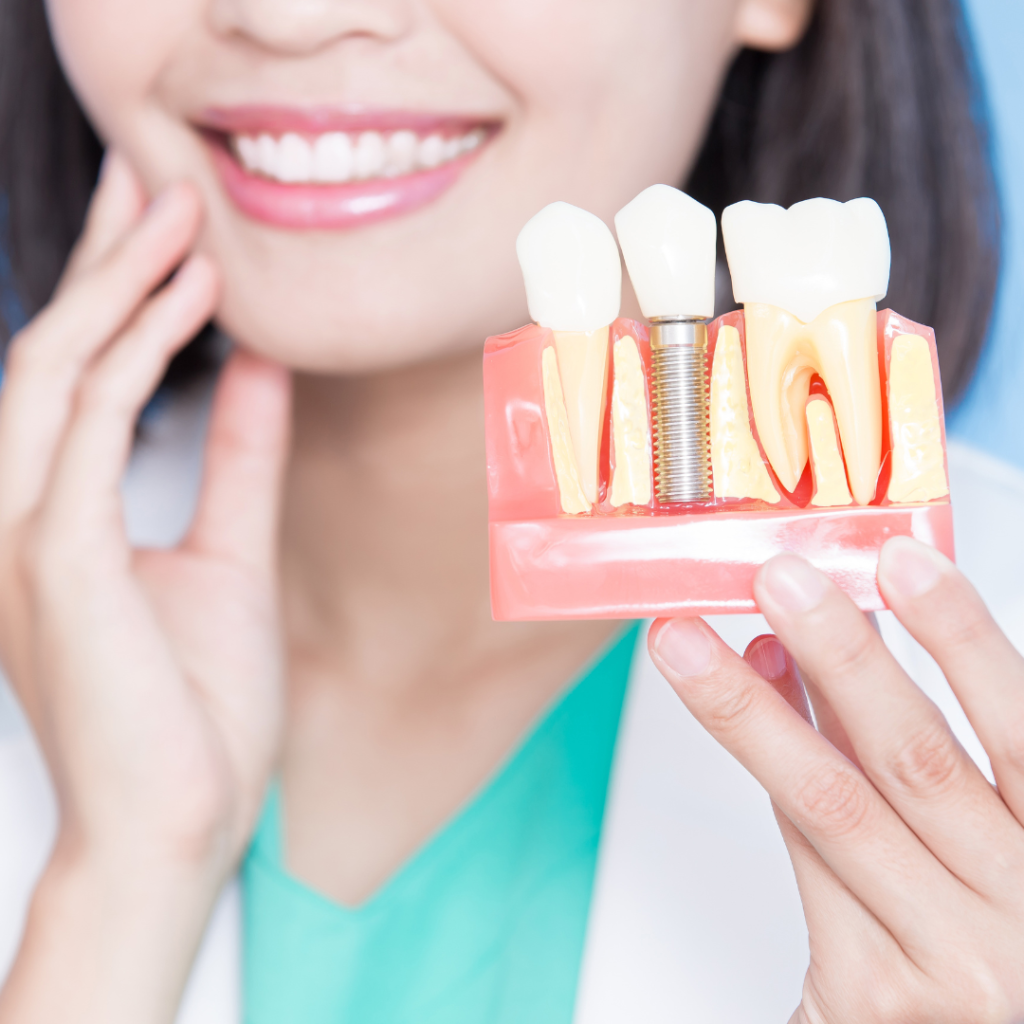Adentia (absence of teeth) – how to restore a smile and chewing at Astra Dent Warsaw
Adentia is a complete or partial absence of teeth, which disrupts chewing, diction and the aesthetics of a smile. This is both a cosmetic problem and a serious health risk. Due to the lack of teeth, the jaw loses bone tissue volume, the oval of the face changes, the gastrointestinal tract experiences increased stress due to insufficient grinding of food.
The European region ranks second in terms of the number of cases of tooth loss – 25.2% of the population, which is 88 million people aged 20 and over. Untimely restoration leads to a distorted bite, gum atrophy, and diseases of the temporomandibular joint.
Astra Dent in Warsaw uses modern methods of implantation and prosthetics to restore a healthy smile and comfort when chewing. Depending on the clinical situation, implants, removable dentures, and bridge-like structures are used, which allow for the complete restoration of the dentition.
Why do patients choose treatment of adentia at Astra Dent Warsaw?
Treatment of adentia requires a highly qualified dentist and the use of modern technologies. Restoration of teeth at Astra Dent is performed according to international protocols, which guarantees accurate diagnosis, predictable results, and patient comfort.
Advantages of treatment of adentia at Astra Dent:
- Ukrainian-speaking doctors with experience in implantation and prosthetics. Dentistry employs specialists with over 25 years of experience in the field of dental implantology and orthopedic dentistry. They undergo training abroad and use advanced prosthetics methods, including "All-on-4" and "All-on-6" for restoration of the dentition on four or six implants. Doctors communicate in Ukrainian, explain each stage of treatment, and select the optimal solution depending on the clinical situation.
- Modern methods of tooth restoration. Astra Dent uses modern digital technologies: 3D scanning to create an individual treatment plan, digital smile design (DSD) to assess the result even before the procedure, laser dentistry, which reduces the rehabilitation period. The dental center has premium systems with over 98% osseointegration in its arsenal: Straumann, Nobel Biocare, Megagen implants.
- An individual approach and comfortable, pain-free treatment. Each patient undergoes a thorough diagnosis, which includes a CT scan of the jaw to assess the condition of the bone tissue. If there are atrophic changes, bone regeneration (sinus lift or augmentation) is performed. For maximum comfort, local anesthesia, sedation, application gels or STA computer anesthesia are used for pain relief without injections.
- A guarantee of quality and durability of the result. Astra Dent provides an official guarantee for Straumann implants – for life. Prosthetic structures are made of biocompatible materials (zirconium, E.max ceramics), which do not cause allergic reactions and provide a natural appearance of teeth.
Regular check-ups and professional hygiene extend the life of implants and maintain oral health. The medical center works on the principle of long-term patient support, ensuring high-quality care even after the completion of treatment.
Types of adentia
Adentia can be congenital or acquired. The treatment method depends on the type of pathology: prosthetics, implantation or combined solutions. With partial tooth loss, it is important to maintain a correct bite and even distribution of the load on the jaw, and with complete tooth loss, it is important to prevent bone tissue atrophy and changes in facial contours.
Partial adentia
Partial adentia is the absence of one or more teeth in the jaw. According to WHO data, more than 30% of people over the age of 35 have lost at least one molar or incisor. Among the causes of pathology:
- complicated caries, leading to tooth extraction;
- periodontitis with loss of bone support of the teeth;
- mechanical injuries that cause root destruction;
- anomalies in the development of the dentition.
The absence of even one tooth triggers a chain reaction: neighboring teeth begin to shift, the bite is disturbed, the load on the jaw is distributed unevenly. To avoid complications, the installation of a single implant or bridge prosthesis is recommended.
Complete adentia
Complete adentia is the absence of all teeth on the upper, lower jaw or both at the same time, the cause of which may be:
- severe forms of periodontitis and osteoporosis;
- advanced dental diseases;
- age-related changes in bone tissue;
- the consequences of injuries and surgical interventions.
To restore the dentition, modern implantation techniques "All-on-4" and "All-on-6" or removable dentures on implants (for patients with insufficient bone tissue volume) are used.
Congenital adentia
Congenital adentia is the absence of tooth rudiments, when teeth are not formed yet at the stage of intrauterine development. This is a rare phenomenon that occurs in 0.08-0.1% of the population. The causes may be genetic or associated with disorders during pregnancy.
Congenital adentia is divided into:
- hypodontia – lack of 1-5 teeth;
- oligodontia – absence of more than 6 teeth;
- total adentia – complete absence of all teeth.
Treatment depends on the patient's age and the condition of the jaw bone. In childhood, orthodontic structures are used to support the development of the jaw. Implantation or combined prosthetics are available for adults.
Acquired adentia
Acquired adentia occurs due to gradual or sudden loss of teeth due to pathological processes or mechanical damage. The main risk factors:
- complicated caries and periodontitis;
- chronic inflammation of the gums (gingivitis, periodontitis);
- jaw injuries during accidents, falls or blows;
- oncological diseases leading to resection of bone tissue.
Treatment methods depend on the number of lost teeth and the condition of the jaw. If the bone tissue is preserved, classic implants are installed. In the case of atrophy, bone augmentation is performed or Zygoma implantation technology is used (a method of installing long implants in the zygomatic bone for patients with severe atrophy of the upper jaw bone tissue).
Consequences of adentia
Ignoring adentia leads to disorders that affect the functionality of the jaw, the digestive system, speech, and general well-being. Deformation of the bite, atrophy of bone tissue, and changes in the muscle structure of the face threaten with irreversible consequences:
- Chewing disorders and digestive problems. In the absence of teeth, the mechanics of chewing change, which leads to an increase in the load on healthy teeth and the gastrointestinal tract due to poor grinding of food. As a result, the risk of gastritis, peptic ulcer and other gastrointestinal disorders increases. People with edentia often switch to soft or liquid food, which causes a deficiency of nutrients and weakening of the body.
- Deformation of the bite and facial asymmetry. When even one tooth is lost, the load on the jaw is distributed unevenly, which causes the displacement of neighboring teeth towards the cavity, a decrease in the height of the bite due to abrasion of the enamel on the opposite side, a curvature of the dentition and changes in the proportions of the face. With complete edentia, atrophy of the alveolar process of the jaw begins – the volume of bone tissue decreases by 60% during the first 6-12 months after tooth loss. This causes sagging cheeks, drooping corners of the lips and the formation of deep wrinkles.
- Deterioration of diction and speech. Teeth participate in the formation of sounds – especially hissing, whistling and sonorous. Loss of front teeth causes articulation disorders, which manifests itself in lisp and changes in the sound of the voice, difficulties in pronouncing words, the need to make efforts during a conversation.
- Decreased confidence due to aesthetic defects. The absence of teeth significantly affects a person’s appearance – the contours of the face change and the visual effect of aging appears. People with edentia experience psychological discomfort due to the need to hide a smile, avoid communication, reduced self-esteem and social isolation.
Untimely treatment of edentia has serious consequences that affect the general state of health. Tooth restoration is the prevention of complications that can affect the digestive system, facial muscle tone and even psychological state.
Methods of treatment of edentia
The choice of treatment method depends on the number of lost teeth, the condition of the bone tissue and the individual characteristics of the patient. Astra Dent dentistry offers three main approaches: implantation, prosthetics and aesthetic reconstruction with crowns or veneers.
Dental Implants
Implantation is the restoration of teeth by installing titanium or zirconium artificial roots in the bone tissue of the jaw. After the implant has taken root, a crown is attached that imitates a natural tooth. Astra Dent offers various orthodontic systems:
- Single implants to replace a tooth. When one tooth is lost, a separate implant with a ceramic or zirconium crown is installed. This allows us to keep the neighboring teeth intact, since they do not need to be ground down, as when installing a bridge prosthesis.
- "All-on-4"/"All-on-6" – implantation of the entire jaw. For patients with complete edentia, "All-on-4" and "All-on-6" technologies are used – load-bearing implants that support a fixed prosthesis. The first involves the installation of four titanium rods per jaw (recommended for moderate bone atrophy). In the case of "All-on-6" six implants are used. This option is recommended with a reduced amount of bone tissue.
Implants recreate the natural appearance and functionality of teeth, ensuring comfort during chewing and talking. With proper care, the service life exceeds 20 years. Unlike removable dentures, implantation does not require daily care of individual structures.
Removable and fixed dentures
In the case of significant defects in the dentition and contraindications to the installation of implants, orthopedic prostheses are used:
Clave and acrylic dentures – frame structures with a metal base that evenly distribute the load on the gums. Used for partial adentia.
Acrylic dentures – light, plastic structures that are attached to the gums using vacuum or special glue. This is a budget option for temporary or permanent wear in case of complete tooth loss.
Bridge dentures – fixed structures that are attached to abutment teeth or implants. There are two types: traditional bridges on your own teeth and bridges on implants.
Dentures are made quickly – in just 2-4 weeks, which allows us to quickly restore the dentition. This is an affordable solution for patients who need to replace lost teeth without significant financial costs. In addition, removable or fixed dentures can be used as a temporary option before implantation.
Veneers or crowns
If the tooth root is preserved, the tooth can be restored with a crown or onlay (veneer):
- Crowns are used to strengthen the tooth after injury, caries or a large filling. They are made of metal ceramics, zirconia or pressed ceramics (E.max).
- Veneers are thin ceramic overlays on the front surface of the tooth that correct the shape and color, but do not restore chewing functionality.
The choice of method depends on the clinical situation: if the root is weakened, removal and subsequent implantation are recommended.
Prices and offers
The cost of adentia treatment depends on the chosen method, the number of implants or prostheses, the need for additional procedures – bone augmentation or professional diagnostics. Astra Dent in Warsaw operates a transparent cost allocation. Each stage of treatment is assessed separately, without hidden fees. Patients receive a detailed estimate after a consultation and 3D scan.
Special packages for medical tourists
For patients from other countries, special offers are provided, which include comprehensive treatment, accommodation and support. This allows you to combine high-quality dental care with a comfortable stay in Poland. You can learn more about the packages at the link.
How to make an appointment?
Treatment of adentia begins with an initial consultation, during which the doctor assesses the condition of the oral cavity, conducts diagnostics and selects a plan for tooth restoration. At Astra Dent, patients receive an individual approach, accurate 3D scanning and modern treatment methods.
There are several ways to make an appointment for a consultation:
- Online form: on the official website;
- Phone: +48 533 599 552;
- E-mail: info@astradent.pl.
The appointment takes place in a comfortable environment without waiting in lines. The appointment is made promptly, and the consultation is held at a time convenient for the patient.

Last update:
18 July 2025, 18:57




















